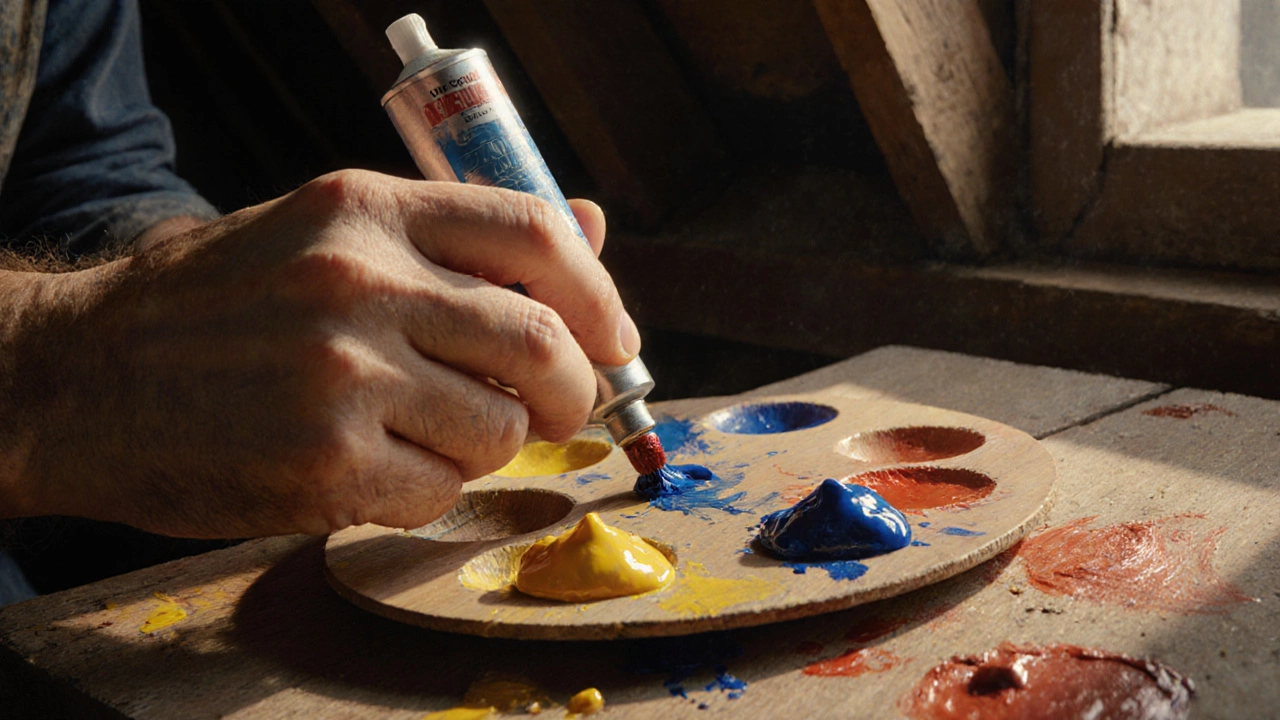Van Gogh Pigments: What Artists Really Used and Why It Matters
When you look at a Van Gogh painting, you’re not just seeing brushstrokes—you’re seeing Van Gogh pigments, the specific chemical compounds 19th-century artists mixed by hand to create vivid blues, yellows, and reds. Also known as artist pigments of the Post-Impressionist era, these were not just colors—they were fragile, unpredictable materials that could darken, fade, or react over time. Van Gogh didn’t have access to modern synthetic dyes. He worked with what was available: lead white, cobalt blue, vermilion, chrome yellow, and emerald green—all hand-ground from minerals and metals. Some of these pigments were toxic. Others were unstable. And that’s why his famous sunflowers aren’t the same bright yellow they were in 1889.
The oil painting technique, the method artists use to layer paint, build texture, and control drying time Van Gogh mastered relied heavily on how these pigments behaved. He applied thick strokes—impasto—because he wanted the paint to hold its shape, to feel alive. But the chrome yellow, a bright pigment he used heavily in his sunflower series and wheat fields has been slowly turning brown for over a century. Scientists now know it’s due to a chemical reaction with the varnish and light exposure. Meanwhile, his cobalt blue, a stable pigment made from cobalt oxide, still holds its intensity. That’s why some parts of his work look untouched while others look dull. This isn’t just art history—it’s a lesson for every painter today. If you want your work to last, you need to know what’s in your tubes.
Van Gogh didn’t paint to make something timeless. He painted because he had to. He used what he could afford, what he could find in small shops in Arles or Paris. His choices weren’t always smart from a conservation standpoint. But they were honest. And that’s why his work still hits hard. Modern artists still use many of these same pigments—not because they’re perfect, but because they have character. The Van Gogh pigments tell us something deeper: art isn’t about permanence. It’s about presence. The way the light hits a yellow field, the way the blue swirls in a night sky—it’s not just color. It’s emotion, fixed in chemistry.
Below, you’ll find real insights from artists who’ve studied his materials, recreated his palette, and learned what happens when old pigments meet modern science. Whether you’re painting portraits, experimenting with texture, or just wondering why some colors fade and others don’t—this collection gives you the facts, not the myths.
